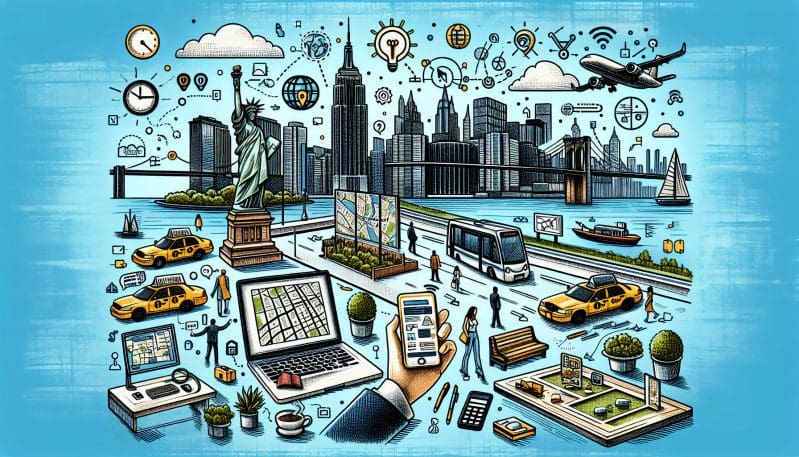The Gig Economy in New York: How Flexible Work Options are Reshaping the Workforce
- Home
- The Gig Economy in New York: How Flexible Work Options are Reshaping the Workforce
- Editors Desk
- January 31, 2024
- 0 Comments
The gig economy is no longer a burgeoning phenomenon—it’s a full-fledged component of the modern labor landscape, especially prominent in bustling metropolises like New York City. In this in-depth analysis, we’ll dive into how flexible work options are redefining the very essence of employment for New Yorkers, altering job security, career progression, and the city’s economic contours.
The skyline of New York is not just an emblem of architectural innovation; it’s a metaphor for the state’s workforce evolution. Amidst the cacophony of street traffic and the relentless pace lies a burgeoning labor movement characterized by freedom, choice, and versatility—the gig economy. With the rise of technology platforms like Uber, Lyft, TaskRabbit, and Upwork, finding gig work has become as easy as hailing a cab in Times Square. But this ease of accessibility comes with its own set of complexities.
Job Security and Career Progression
In traditional roles, there’s a sense of stability, a predictable trajectory that offers employees a clear path to progression and financial security. The gig economy, by contrast, has introduced a dynamic where job security is as fluctuating as the stock market. Gig workers often jump from one assignment to another, without the safety net of healthcare benefits, paid leave, or retirement plans. There’s the thrill of ‘being your own boss,’ but it’s coupled with the anxiety of not knowing when the next paycheck will come.
Economic Impact
New York’s economy thrives on the diversity and adaptability of its workforce. The gig economy has pumped new energy into this dynamic, but it has also provoked questions about the future of work. The flexibility offered by gig jobs is a double-edged sword—it can allow for greater work-life balance but can also lead to financial instability. As more workers shift towards freelance and contract work, there’s a palpable impact on consumer spending, housing stability, and the traditional business model itself.
Technology’s Facilitating Role
Technology has been the great enabler of the gig economy. Apps and platforms are the new marketplace for work, connecting gig workers with those in need of their services. This digitization of the work procurement process has undoubtedly opened up opportunities for many, but it’s also raised concerns about data privacy, worker exploitation, and the erosion of employee rights.
Legal and Policy Implications
The legislative framework is scrambling to keep up with the pace of change in the workforce. New York, as a trendsetter, is grappling with how to protect workers while fostering innovation and maintaining business flexibility. Issues like minimum wage for gig workers, unemployment insurance, and the classification of employees versus independent contractors are hotly debated topics.
Personal Stories of Gig Workers
Behind the statistics and legislation are the personal narratives of those who live the gig economy daily. Some have found liberation in the flexibility of gig work, while others have encountered harsh unpredictability. Their stories are the lifeblood of this economic shift, providing insight into the human aspect of flexible working.
The Need for Worker Protections
With the rise of gig work, there’s an increasing call for new worker protections that guarantee a minimum level of stability and security. New York might have to consider innovative policies to ensure that the gig economy doesn’t become a gig exploitation.
Flexibility vs. Stability
New York’s journey into the gig economy is a delicate dance between the allure of flexibility and the need for stability. How the city navigates this balance will set a precedent for others to follow. With the right mix of policy, support, and respect for worker rights, New York could become a model for how to integrate the gig economy into a sustainable economic framework.
In conclusion, the gig economy in New York is a microcosm of a global shift in work practices. It’s a complex, evolving landscape that presents both opportunities and challenges. As the city continues to adapt, the world watches and learns, taking cues from the experiences of New York’s diverse and dynamic workforce.


Leave A Comment